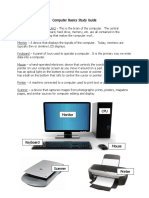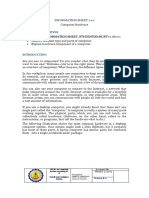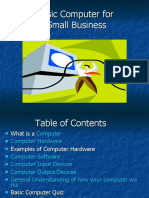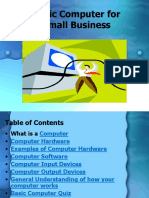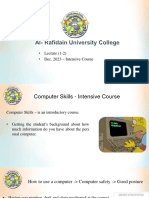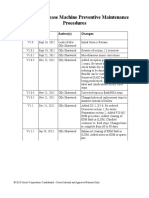0% found this document useful (0 votes)
16 views23 pagesComputer Science Course
A computer is an electronic device that processes data through input, processing, storage, and output, consisting of hardware and software components. The operating system manages the hardware and software, while the CPU processes instructions and RAM serves as short-term memory. Additionally, a computer network connects multiple devices for sharing information, and the internet is a global network enabling communication and access to resources.
Uploaded by
sitesmy152Copyright
© © All Rights Reserved
We take content rights seriously. If you suspect this is your content, claim it here.
Available Formats
Download as DOCX, PDF, TXT or read online on Scribd
0% found this document useful (0 votes)
16 views23 pagesComputer Science Course
A computer is an electronic device that processes data through input, processing, storage, and output, consisting of hardware and software components. The operating system manages the hardware and software, while the CPU processes instructions and RAM serves as short-term memory. Additionally, a computer network connects multiple devices for sharing information, and the internet is a global network enabling communication and access to resources.
Uploaded by
sitesmy152Copyright
© © All Rights Reserved
We take content rights seriously. If you suspect this is your content, claim it here.
Available Formats
Download as DOCX, PDF, TXT or read online on Scribd
/ 23

